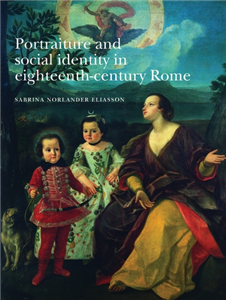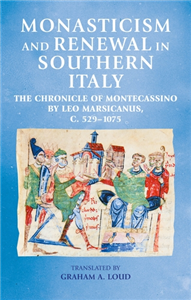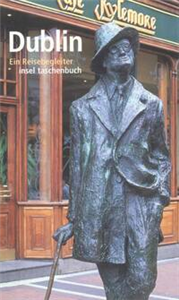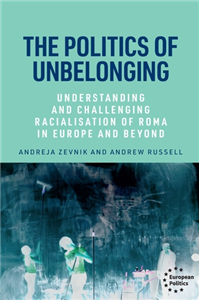Your Search Results
-
Promoted ContentTeaching, Language & ReferenceFebruary 2020
A writer's guide to Ancient Rome
by Carey Fleiner, Jerome de Groot
-
Promoted ContentLiterature & Literary StudiesJune 2019
Titus Andronicus
by Jim Bulman, Michael Friedman, Carol Chillington Rutter, Alan Dessen
Michael D. Friedman's second edition of this stage history of Shakespeare's Titus Andronicus adds an examination of twelve major theatrical productions and one film that appeared in the years 1989-2009. Friedman identifies four lines of descent in the recent performance history of the play: the stylised, realistic, darkly comic, and political approaches, which culminate in Julie Taymor's harrowing film Titus (1999). Aspects of Taymor's eclectic vision of ancient Rome under the grip of modern fascism were copied by several subsequent productions, making Titus the most characteristic, as well as the most influential, contemporary performance of the play. Friedman's work extends Alan Dessen's original study to include Taymor's film, along with chapters devoted to the efforts of international directors including Gregory Doran, Silviu Purcarete, and Yukio Ninagawa.
-
 Trusted Partner
The ArtsNovember 2009
Trusted Partner
The ArtsNovember 2009Portraiture and social identity in eighteenth-century Rome
by Sabrina Eliasson
Portraiture and Social Identity in Eighteenth-Century Rome sheds new light on the relationship between portraiture, social affirmation and the myth of Antiquity as it was experienced and elaborated in eighteenth-century Rome. Drawing upon a wealth of unpublished documents and previously unexamined literary texts, it offers new insights and readings into how the experience of the City in terms of abstract or concrete appropriation affected the ways of portraying native or visiting elite sitters. The Grand Tour portrait, usually discussed as a purely British phenomenon, is here put in its original context of production and compared to the portraits of the Romans themselves. Portraiture and social identity in eighteenth-century Rome will become essential reading for anyone with a particular interest in eighteenth-century art and its social use. ;
-
 Trusted Partner
Humanities & Social SciencesNovember 2023
Trusted Partner
Humanities & Social SciencesNovember 2023Rethinking Norman Italy
Studies in honour of Graham A. Loud
by Joanna Drell, Paul Oldfield
This volume on Norman Italy (southern Italy and Sicily, c. 1000-1200) honours and reflects the pioneering scholarship of Graham A. Loud. An international group of scholars reassesses and recasts the paradigm by which Norman Italy has been conventionally understood, addressing varied subjects across four key themes: historiographies, identities and communities, religion and Church, and conquest. The chapters revise and refine our understanding of Norman Italy in the eleventh and twelfth centuries, demonstrating that it was not just a parochial Norman or Mediterranean entity but also an integral player in the medieval mainstream.
-
 Trusted Partner
International lawSeptember 2009
Trusted Partner
International lawSeptember 2009War crimes and crimes against humanity in the Rome Statute of the International Criminal Court
by Christine Byron
This book provides a critical analysis of the definitions of war crimes and crimes against humanity as construed in the Rome Statute of the International Criminal Court. Each crime is discussed from its origins in treaty or customary international law, through developments as a result of the jurisprudence of modern ad hoc or internationalised tribunals, to modifications introduced by the Rome Statute and the Elements of Crimes. The influence of human rights law upon the definition of crimes is discussed, as is the possible impact of State reservations to the underlying treaties which form the basis for the conduct covered by the offences in the Rome Statute. Examples are also given from recent conflicts to aid a 'real life' discussion of the type of conduct over which the International Criminal Court may take jurisdiction. This will be relevant to postgraduates, academics and professionals with an interest in the International Criminal Court and the normative basis for the crimes over which the Court may take jurisdiction.
-
 Trusted Partner
May 1998
Trusted Partner
May 1998Tatar Titus
Stücke
by Albert Ostermaier, Klaus Völker
Zwischen zwei Feuern – Tollertopographie: Im New Yorker Exil durchleidet Ernst Toller seinen letzten Tag, den 22. Mai 1939. Ostermaiers Stück entwirft eine Topographie der Künstlerseele: Tollers Alter ego, Tollkirsch, führt ihm immer wieder sein Scheitern vor Augen und hetzt ihn so zu Tode.Zuckersüss & Leichenbitter oder: vom kaffee-satz im zucker-stück: Verzweifelt kaut der Mann, schwarzen Kaffee trinkend, an seinen Sätzen: Bruchstücke einer gescheiterten Lebensgeschichte und Reflexionen über den Tod. Da meldet sich überraschend ein Zuckerstück zu Wort. Ohne Punkt und Komma kämpft es mit Witz und Pop für ungesüßten Kaffee und damit um sein Leben.Tatar Titus: Titus Andronicus, kein Feldherr, sondern Dichter, hat sich mit Herrscher und Staat verbündet, um dem eigenen Ruhm zu dienen. Zu tollkühn hat er sich ins Mahlwerk der Macht begeben, und dort haben sie Hackfleisch aus ihm gemacht.
-
 Trusted Partner
2024
Trusted Partner
2024My Italy with Berlusconi
And what has become of it. Essays, conversations, reports
by Michaela Namuth
The political era of media entrepreneur and multi-billionaire Silvio Berlusconi began in 1994. German journalist Michaela Namuth also arrived in Rome at that time. He became prime minister, she became a freelance correspondent for various newspapers. She spent the long period of his government with him. During this time, the populist Berlusconi not only paved the way for a far-right government, he was also an ice-breaker for other right-wing populists in Europe and elsewhere. What else happened during and after Berlusconi's time in power is told in 20 chapters of articles, reports and interviews. The result is a colourful mosaic of contemporary Italy. It is about publishing, design, crime fiction, the mafia, a women's factory, the south and Nutella. Under Berlusconi, the country has changed. Many speak of “Berlusconisation”, by which they mean the gradual weakening of democracy. It is a critical book, but also a declaration of love to a contradictory country whose name still has a special ring to many ears.
-
 Trusted Partner
Humanities & Social SciencesFebruary 2026
Trusted Partner
Humanities & Social SciencesFebruary 2026Monasticism and renewal in southern Italy
The Chronicle of Montecassino by Leo Marsicanus, c. 529–1075
by Graham Loud
The chronicle of Leo Marsicanus recounts the history of the abbey of Montecassino from its foundation by St. Benedict in the sixth-century up to 1075. It presents a detailed and compelling story of tribulation and renewal, with the abbey twice destroyed and abandoned in the early Middle Ages and then rebuilt. It concludes with an informative account of the building and dedication of the new abbey church by Abbot Desiderius in 1066-71. The chronicle is also a key source for the more general history of southern Italy in the early Middle Ages, and of the conquest of the region by the Normans during the eleventh century. In addition, Montecassino was one of the great intellectual centres of western Christendom and a major contributor to the reform movement within the Church during the later eleventh century. Leo's chronicle is a crucial witness to that role.
-
 Trusted Partner
FictionOctober 2020
Trusted Partner
FictionOctober 2020Once upon a time in Italy
by Fulvio, Luca Di
Rome in 1860 - with the exciting age of the Risorgimento as an atmospheric backdropLuca Di Fulvio's new novel is a powerful emotional epic about solidarity, self-discovery, homeland, family, love, and life dreams. The story begins in 1860, with the plot set mainly in Rome during the last phase of the Italian unification movement, the Risorgimento. Luca Di Fulvio creates a highly emotional, mentally cinematic epic with strong, distinctive characters. An orphan boy who wants to use his camera to change the way people see the world. A circus girl with a burning interest in politics. A countess who gives the gift of freedom to others. Three people whom fate brings to Rome in 1870, the pulsating heart of Italy on its path to becoming a nation state. As their paths cross in the midst of this city of promise, their dreams seem to be interwoven with magical bands. But the dazzling city of Rome presents the three with unexpected challenges. One day, when a dramatic event shakes the Eternal City, they are threatened with losing everything they hold dear. A highly emotional epic about three unforgettable characters, and a visually stunning story about new beginnings, the power of love, and a great longing for security in a world where one person stands up for the other. Bursting with life, deeply moving, and full of hope - Luca Di Fulvio's stories are like journeys that you wish would never end Three people and their dream of a better world The new novel by SPIEGEL bestselling author Luca Di Fulvio Set in Rome in 1860 against the atmospheric backdrop of the Italian unification movement
-
 Trusted Partner
Trusted Partner
-
 Trusted Partner
November 2015
Trusted Partner
November 2015Civil War in Ancient Greece and Rome
Contexts of Disintegration and Reintegration
by Herausgegeben von Börm, Henning; Herausgegeben von Mattheis, Marco; Herausgegeben von Wienand, Johannes
-
 Trusted Partner
Humanities & Social SciencesMarch 2017
Trusted Partner
Humanities & Social SciencesMarch 2017Imperial cities
Landscape, display and identity
by Felix Driver, David Gilbert
Imperial cities explores the influence of imperialism in the landscapes of modern European cities including London, Paris, Rome, Vienna, Marseilles, Glasgow and Seville. Examines large-scale architectural schemes and monuments, including the Queen Victoria Memorial in London and the Vittoriano in Rome. Focuses on imperial display throughout the city, from spectacular exhibitions and ceremonies, to more private displays of empire in suburban gardens. Cconsiders the changing cultural and political identities in the imperial city, looking particularly at nationalism, masculinity and anti-imperialism.
-
 Trusted Partner
Trusted Partner
-
 Trusted Partner
May 2005
Trusted Partner
May 2005Dublin
Ein Reisebegleiter
by Hans-Christian Oeser
Dublin, mit London, Paris und Rom das beliebteste städtische Reiseziel Europas, ist zugleich auch das literarischste. Spätestens seit James Joyce' Ulysses (1924) findet sich die irische Hauptstadt auf der literarischen Weltkarte eingezeichnet. Auf acht Spaziergängen führt Hans-Christian Oeser zu ihren literarisch bedeutsamen Stätten.Geburts-, Wohn- und Sterbehäuser, Grab- und Denkmäler, Pubs und Theater sowie einige wenige Museen – sie alle eröffnen Zugang zu den Persönlichkeiten der irischen Literatur: den Autoren und ihren Figuren. Ein Serviceteil mit den wichtigsten Adressen und Telefonnummern ergänzt den Band.
-
 Trusted Partner
Humanities & Social SciencesMay 2025
Trusted Partner
Humanities & Social SciencesMay 2025The politics of Unbelonging
Understanding and challenging racialisation of Roma in Europe and beyond
by Andreja Zevnik, Andrew Russell
This book offers a comprehensive study of racialisation of Romani communities in Europe (and beyond). Drawing on the idea of unbelonging it demonstrates how Romani communities are placed in a position of visceral visibility by local, national and international institutions as well as public media discourses. It shows how such positionality impacts the ability of Roma to self-represent politically and build capacity for change. From the position of unbelonging the book offers an account of Romani agency which both challenges the mainstream representations of Roma but also develops an alternative none-nation-state sense of belonging. In doing so the book outlines an account of Romani alternative expressions in order to take control of their relationship with their own history, future, knowledge, and identity, and the rest of the society.
-
 Trusted Partner
Trusted Partner
-
 Trusted Partner
Trusted Partner
-
 Trusted Partner
Humanities & Social SciencesNovember 2023
Trusted Partner
Humanities & Social SciencesNovember 2023London presbyterians and the British revolutions, 1638–64
by Elliot Vernon
-
 Trusted Partner
Literature & Literary StudiesJanuary 2013
Trusted Partner
Literature & Literary StudiesJanuary 2013The towns of Italy in the later Middle Ages
by Trevor Dean
The towns of Italy in the later middle ages presents over one hundred fascinating documents, carefully selected and coordinated from the richest, most innovative and most documented society of the European Middle Ages. No other English language sourcebook has the same geographical or chronological range. This collection is carefully structured around the crisis of the fourteenth century and arranged in contrasting groups of texts. By connecting documents in translation to recent scholarship and debates, it addresses five key areas of medieval urban history: the physical environment, civic religion, economy, society and politics. Offers students well-translated and effectively contextualised documents along with some guidance to the secondary work of Italian scholars which is largely inaccessible to undergraduate students.
-
 Trusted Partner
Trusted Partner


























